Solar Geometry Analytics

Systems which rely on solar forcing for their functioning include PV panel arrays, solar water heaters, as well as static building elements such as windows, apertures, and skylights.
The realization of good system performance is substantially enhanced by the availability of accurate, precomputed solar position time series data. This is especially important for PV panel arrays that are relied upon for either grid-tied or off-grid power systems. Such arrays can be deployed in a fixed position or, alternatively, can be equipped, for example, with hinges for elevation adjustments, or with solar tracking hardware.
In all these cases, accurate calculation of local solar geometry is the key to an effective design. Our analytic database infrastructure is specifically designed to provide this capability.
Clear Sky Power Estimates
A calibrated clear sky model, developed by our team, allows for the estimation of Global Tilted Irradiance (GTI) power curves for any fixed or adjustable PV panel, based only on local site coordinates.
This allows a system designer to select optimal panel position(s) based on local solar geometry.
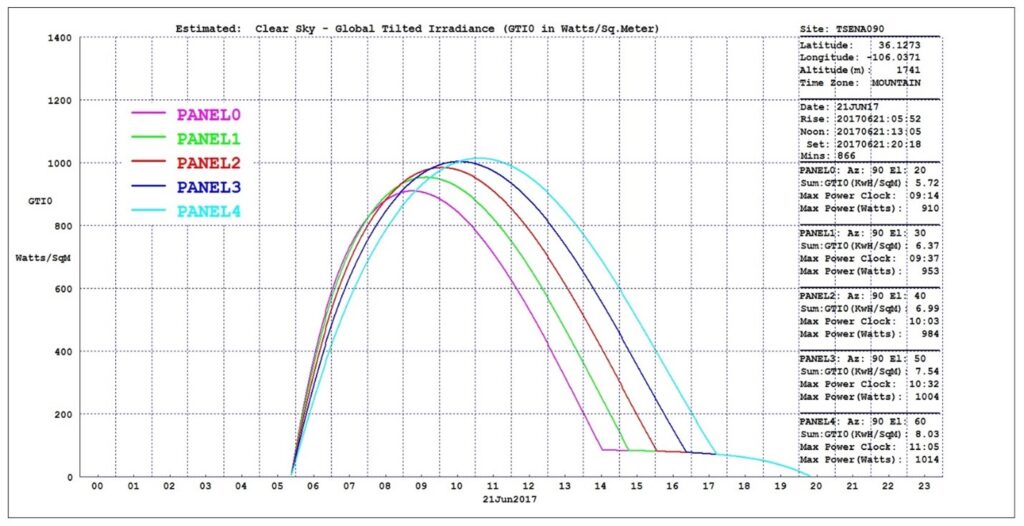
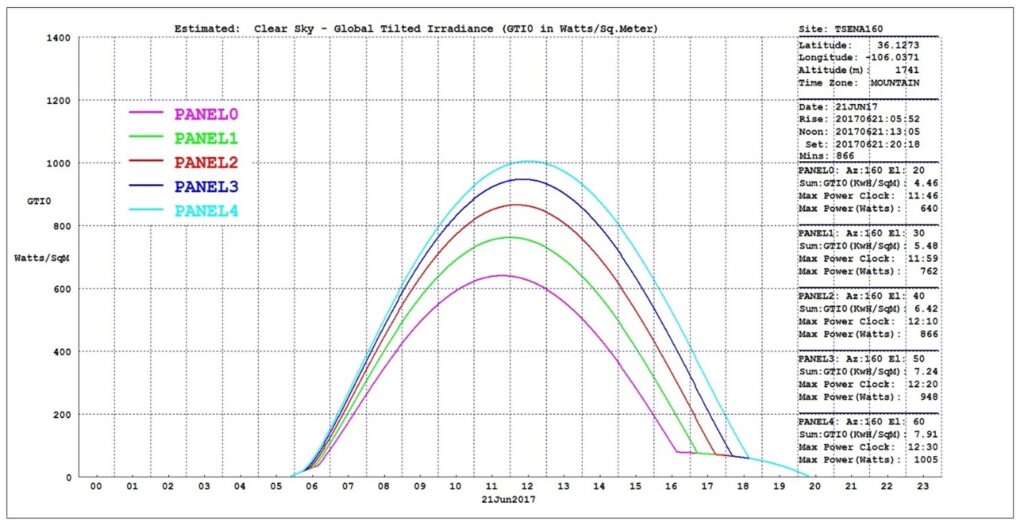
Incident power curves for four different panel elevations and two different azimuth settings are shown in the two charts above for a summer solstice clear sky day in the Taos, New Mexico region.
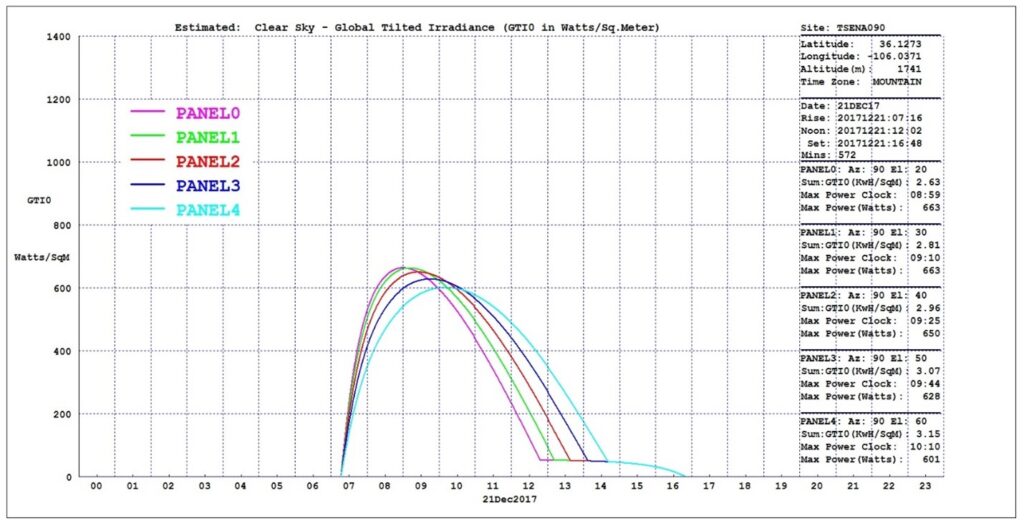
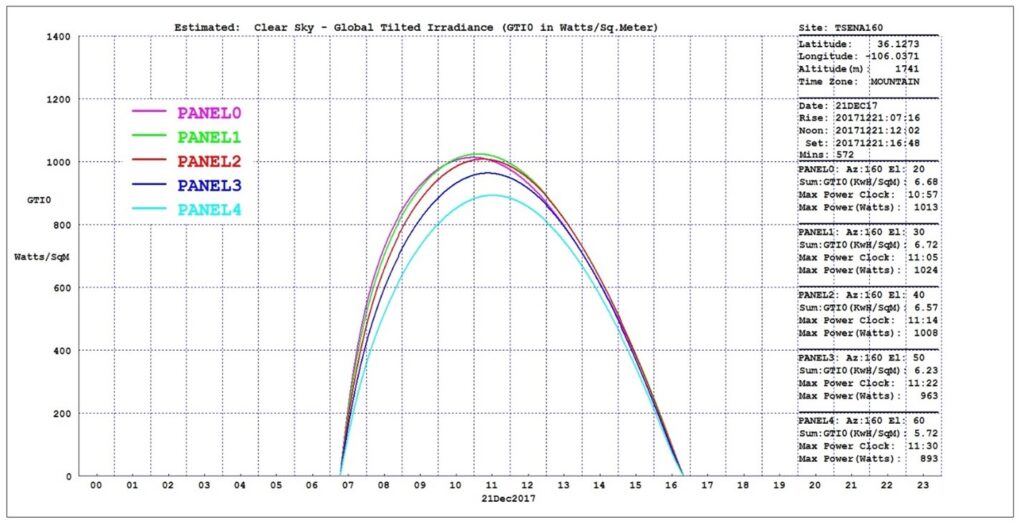
Again, incident power curves for four panel elevations and two azimuth settings are shown in the two charts above, this time for a winter solstice clear sky day. Here we see a substantial difference based on azimuth.
Fixed and Adjustable Panels
In this example, we consider a solar earthmass residence with a tilted glass front face, and a hinged PV panel attached to the front face. In the spring, the PV panel is flipped up to its summer position, and in the fall, the PV panel is flipped down to its winter position, which is parallel to the tilted front face.
The angle (in degrees) formed by the sun’s rays and a perpendicular to a panel is called Theta, and in this chart, the minimum Theta angle for each day is plotted for the PV and front face panels.
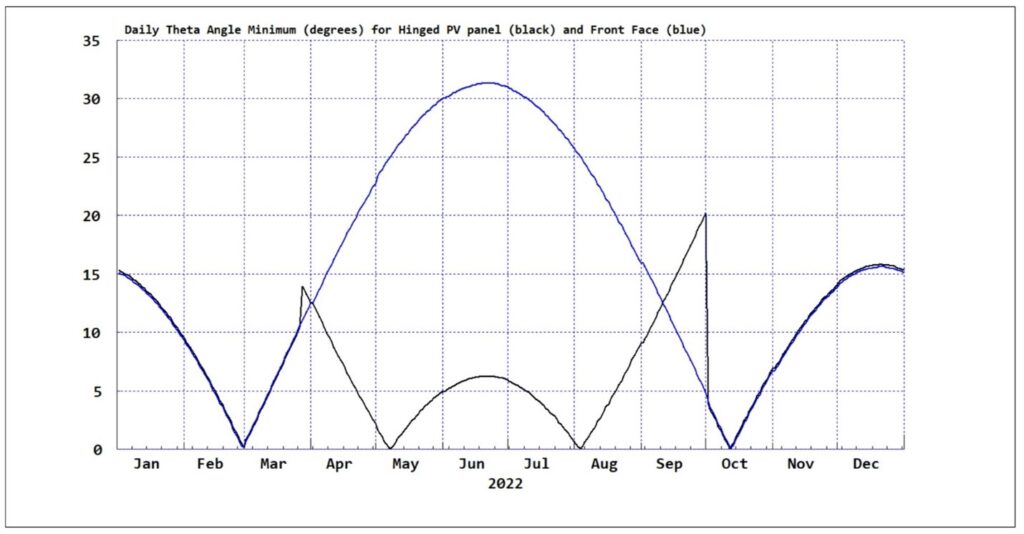
For PV panels, lower Thetas are always better. For the year displayed, the hinged PV panels were flipped up near the end of March for the summer, and then flipped down at the end of September for the winter.
